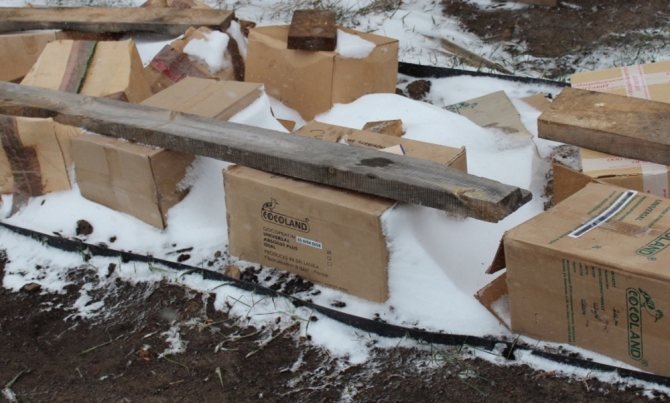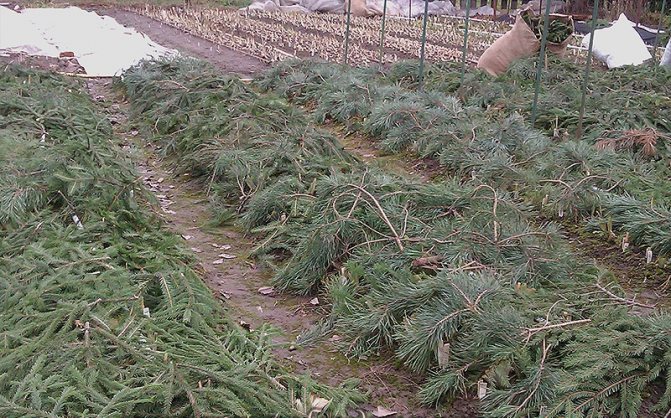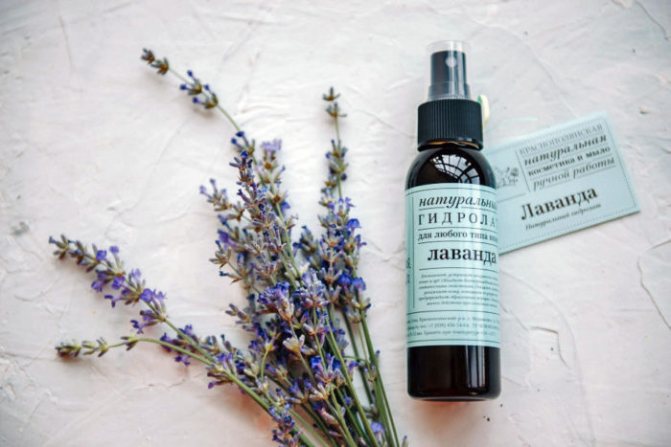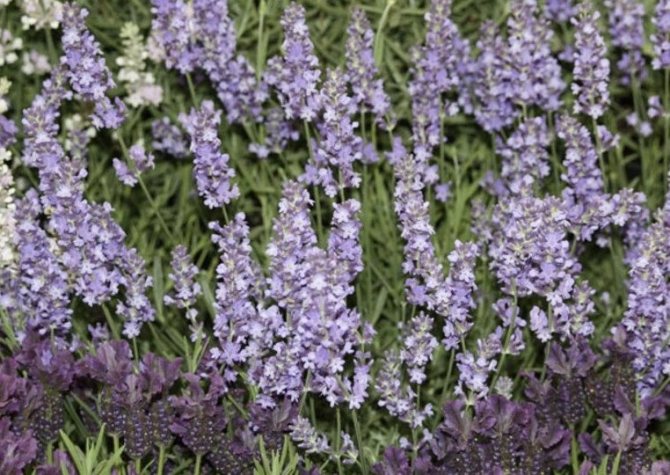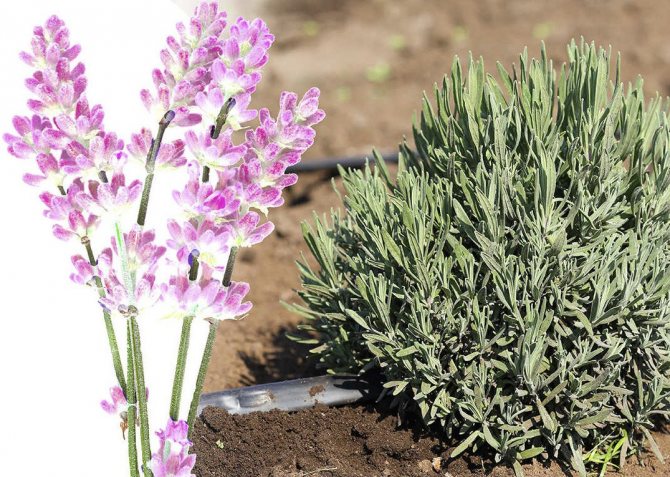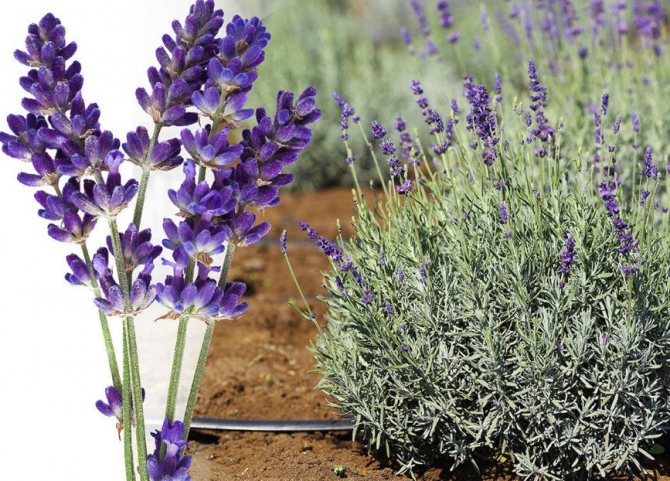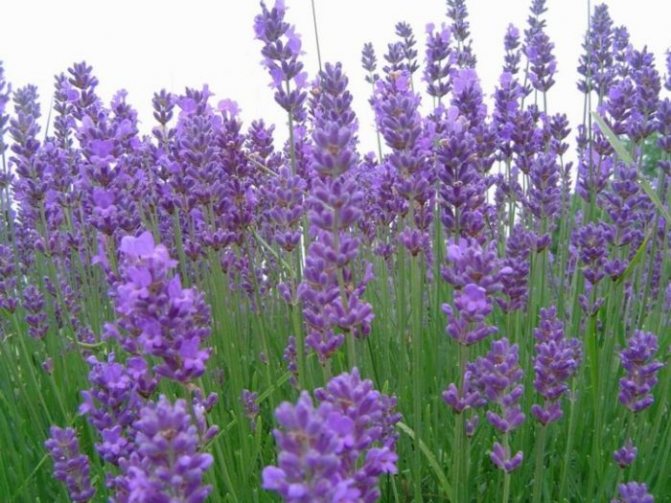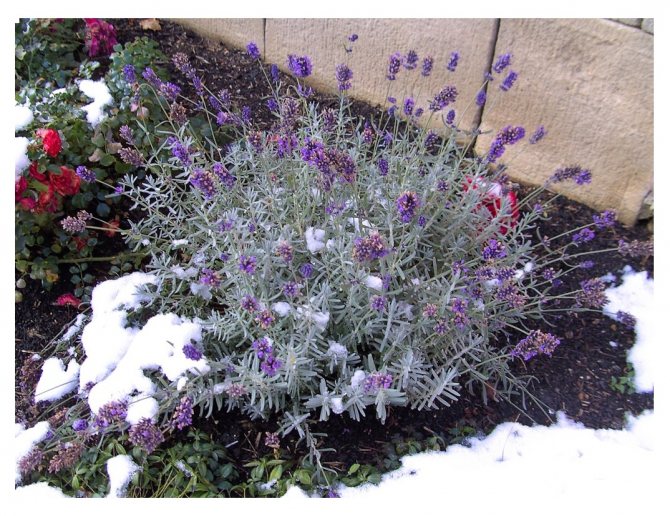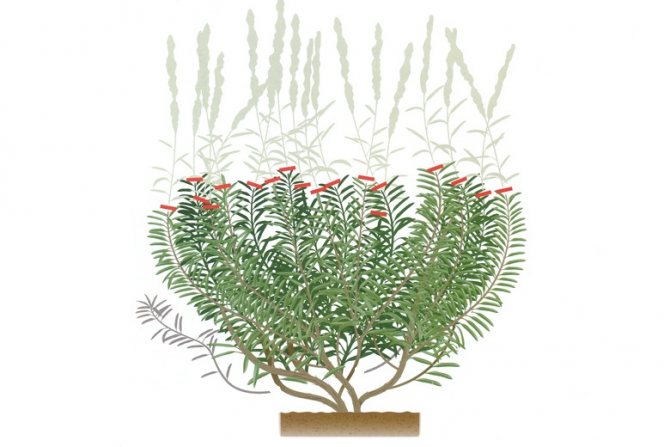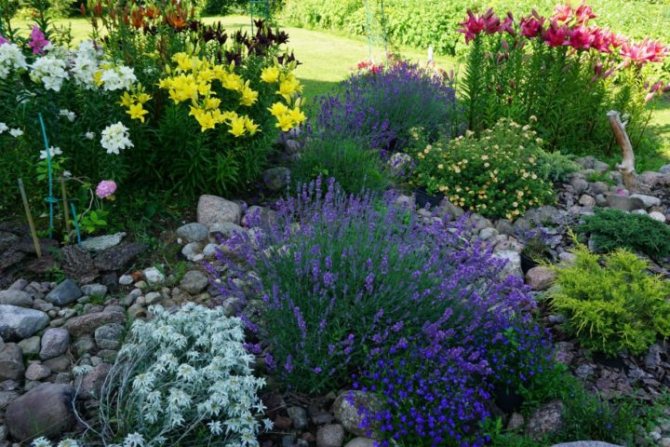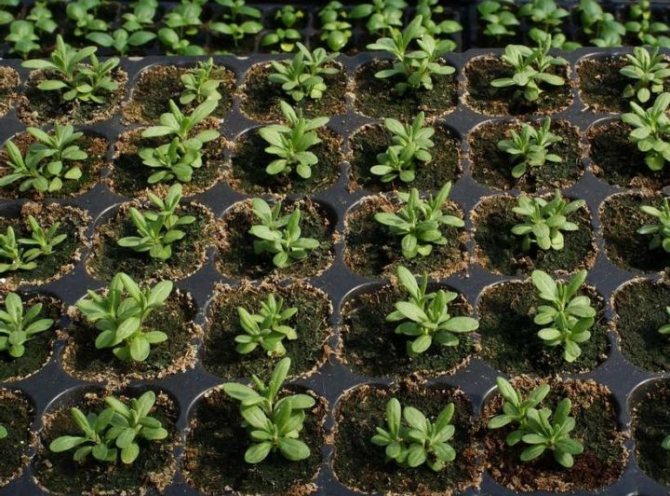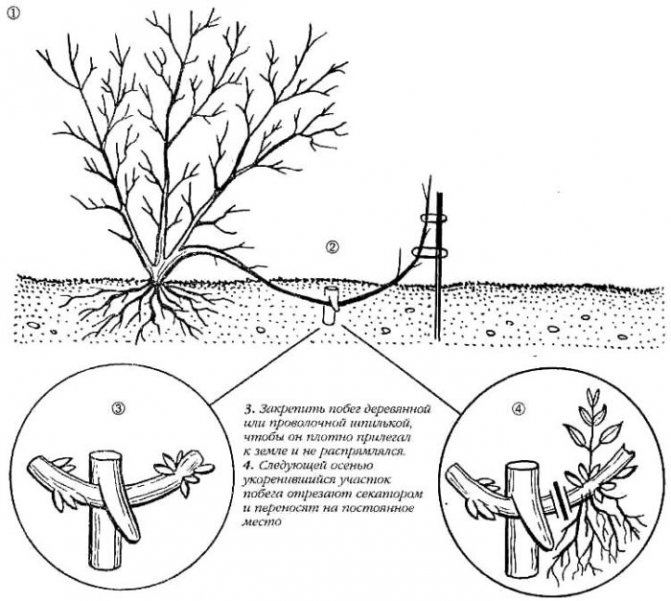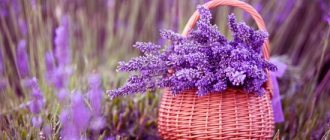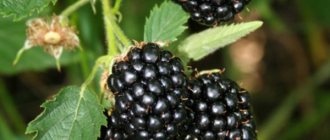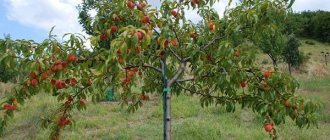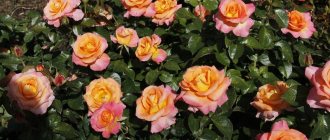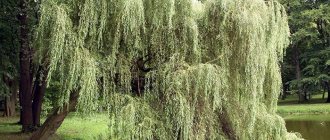Lavender is a flower that naturally grows in southern regions with warm climates. For example, in the Canary Islands, in the South of Europe, in Australia, in the Red Sea region.
Dear Readers! For you, we have created communities in social networks, in which useful articles and interesting ideas are published several times a day! Subscribe and receive useful content in a convenient format!
However, at present, this plant can be successfully grown in more northern latitudes. Some varieties of lavender have learned to breed even in the Moscow region.
In this article, we will tell you what you need to do to make a flower grow in your dacha near Moscow, how to plant it correctly and how to care for it.
Does a flower grow in the Moscow region

Thanks to selection and modern agricultural technologies, there are lavender varieties that take root even in the Moscow region.
This plant prefers well-drained soil and sunlight. It does not take root well on heavy soils. Due to the fact that in nature, lavender mainly grows in mountainous areas, it has a developed root system. Therefore, it is better to plant it on a hill. These conditions must be observed without fail when growing a plant in your own garden.
REFERENCE. If there are no hills or heavy wet soils in your summer cottage, then an artificial embankment can be made for planting. Perhaps this will be the first step towards a passion for landscape design.
Propagation of lavender by cuttings
This is the most humane breeding method. For him, you can use both young and woody. Young shoots are cut into 13 cm each. Moreover, each cutting should have three bunches of leaves. Old twigs are pruned by 5 cm.
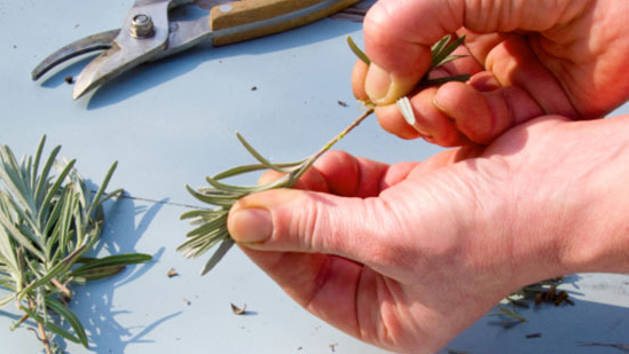

After that, the leaves are cut off, except for the upper ones, and the cuttings are planted in the soil, and the lower knot of the leaves should be completely in the ground. Watered and wrapped with foil. This will create a greenhouse effect and stimulate growth. Watering is necessary as the soil dries out. It will take 6 weeks and the plant can be planted on the site, because the root system has already been formed.


What varieties of lavender are suitable for the Moscow region
In the Moscow region and Central Russia, only English lavender takes root well. This is the name for a whole group of narrow-leaved lavender.
Outwardly, this plant looks like this:
- Compact shrub about 60 cm;
- Many shoots (up to 300 - 400);
- Branched roots;
- Narrow neat gray-green leaves;
- Inflorescences are elongated, similar to an ear and consisting of many small flowers;
- The color is uniform - purple, blue, rarely pink.
Of the varieties worth paying attention to, it can be noted Hydcote, Southern Woman, Lilac Mist, Dwarf Blue, Ascension, Blue Expanse, Elegance, Narrow-leaved, Delight.
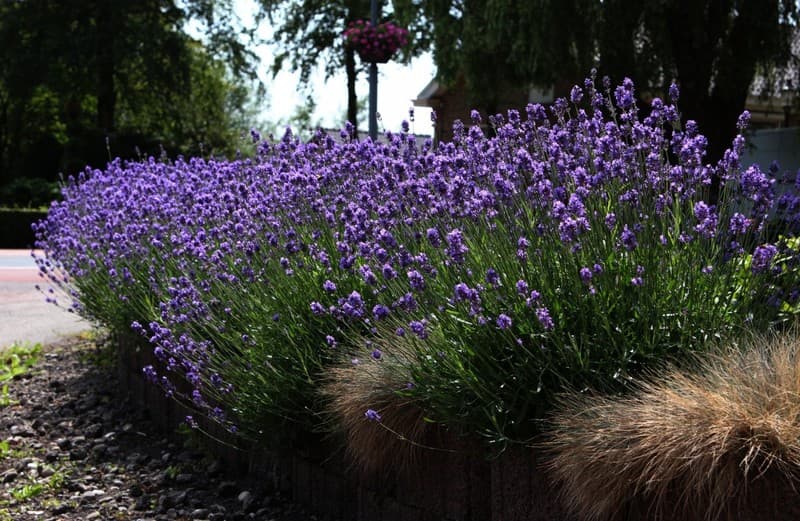

Lavender Hydcote
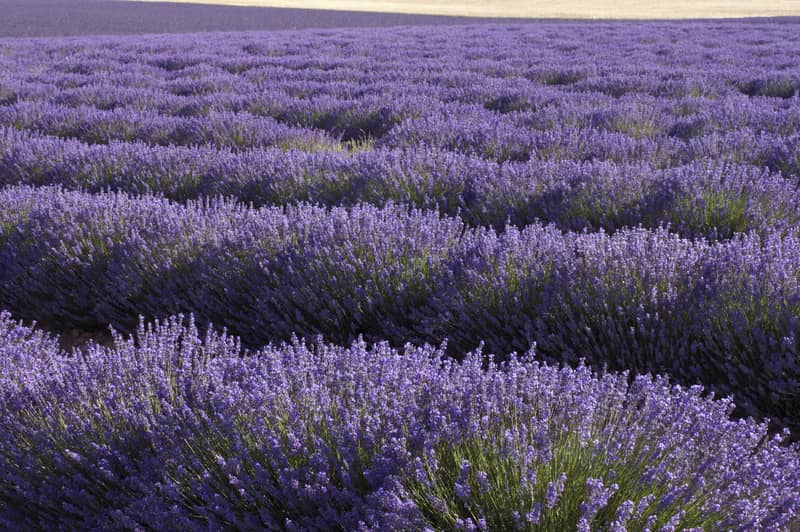

Lavender Dwarf Blue


Lavender elegans
English lavender is the only one capable of withstanding Moscow frosts and temperature changes. For example, Spanish lavender can hardly tolerate these conditions and can only survive in nurseries with close attention and regular care in winter. And the French can only be grown as an indoor flower. Varieties are great for this. Rocky Road and Snowman.
REFERENCE. English lavender blooms in the first half of summer, in June and July.
Types and varieties
Lavender French or broadleaf naturally grows in the European south and is quite thermophilic. Very fragrant and decorative due to long flowering (from May to July). The most common varieties are:
- Regal Splendur (dark purple flowers).
- Rocky Road (large blue flowers with a lilac tint).
Hybrid or Dutch lavender is bred by crossing English and other species with each other. It is a fairly large shrub with beautiful silvery leaves. Blooms quite late - in July.
- Alba (white flowers).
- Arabian Knight (flowers have a rich blue or purple color range).
Medicinal lavender (Lavandula spicata) is the most winter-hardy and unpretentious species. This short shrub with blue and lilac flowers blooms in late summer. Often used for low hedges. The most popular varieties:
- Rosea (bush 35 - 40 cm high and pink-lilac flowers).
- Mansted (height up to half a meter and flowers of a very beautiful pure blue).
- Headcoat Blue (inflorescences are light purple).
Features of planting a plant in this region
In the Moscow region, lavender can be planted both in spring and autumn. However, preference is given to spring planting. In the fall, the plant can only be planted if the year is warm.
The ideal temperature for planting lavender is +18 - +22 degrees. But do not rush to plant flowers on the first warm day. Let the daytime temperature stabilize at least 15 degrees. Usually, in the Moscow region, this weather occurs at the beginning of May.
For planting, choose places on a hill with loamy or sandy loam soil. Preferably away from the water source. This is due to the fact that the plant has very long roots (up to 2 m), and they can begin to rot from groundwater. It is also important that the site is well lit by the sun. In the shade, the plant is also capable of growing, but its flowering will not be so bright and lush, and the bush itself will grow less.
When planting, keep in mind that lavender does not tolerate drafts and open spaces, so it must be protected from the wind.
TIP! To make the lavender look more beautiful, plant it in such a way that the distance between the seedlings is equal to the height of the future adult plant (i.e. about 50-60 cm).
Step-by-step instructions for planting lavender
Rules for caring for lavender in the Moscow region
When growing lavender in the Moscow region, you need to pay special attention to proper care.
First of all, you need to remember that lavender does not like frequent watering. From this, the leaves of the plant turn yellow and growth slows down.You need to water once a week, only in especially dry periods, increasing the frequency of watering up to 1 time in 4 days.
IMPORTANT! After heavy rains, the soil under the bushes must be loosened. Under no circumstances should a hard crust be allowed to form. Since in this case the roots will not "breathe".
Feeding lavender begins in early spring. At this time, nitrogen-containing fertilizers are applied. Thus, the growth of shoots and leaves is stimulated. During the budding and flowering period, you can add mineral dressings based on phosphorus and potassium.
Also, this plant loves compost, which loosens the soil under the bushes.
INTERESTING. If in the spring you mulch lavender bushes with a thin layer of peat or humus, then you do not need to fertilize at all.
Lavender is a plant that needs regular pruning. It needs to be carried out twice a year, in spring and summer.
- After the end of the spring frost, the first pruning is carried out. Firstly, it is needed from an aesthetic point of view, and, secondly, it stimulates the development of the plant.
- The second pruning is done in July after the first flowering. Thanks to her, new flowers begin to form on the bushes.


Pruning lavender
English lavender is frost resistant and can survive even at -25. But experienced gardeners are advised to cover the bushes for the winter. For this, it is better to use dry shoots, grass and leaves.
Reproduction of lavender by dividing the bush in spring
Lavender bushes can be divided. To do this, cut off all the branches in the fall, leaving about 10 cm. After that, the bush is sprinkled with earth, filling the gaps between the shoots. Leave for the winter. In the spring, add another layer of soil. In summer, lavender will produce young shoots. In the fall, the bush is dug up and divided into parts. After the resulting parts are seated. This method of reproduction is very traumatic for the plant, and can lead to its death.


How to propagate
Lavender can be propagated in one of 3 ways:
- By cuttings... The material for transplantation is prepared in the spring before the buds awaken, when small cuttings (8-10 cm) are separated from the adult plant. They are planted warm and grown throughout the season. This is best done in a greenhouse or greenhouse. When the seedlings take root by the beginning of autumn, they are transplanted to a permanent place along with a lump of earth in which they grew.
- Seeds... Seeds for planting are prepared 1.5-2 months before the intended sowing. At this time, in a small container, they are buried in wet sand and placed in the refrigerator. Sowing is carried out in the spring, when the threat of frost has passed.
- Layers... This breeding method is most effective for lavender. In the spring, you need to choose a bush with the longest shoots, bend one branch to the ground and sprinkle it with fertile soil so that 10-12 cm remain above the ground. By the fall, roots are formed on the shoot. It turns out a new bush that can be transplanted from the mother bush to a new place.
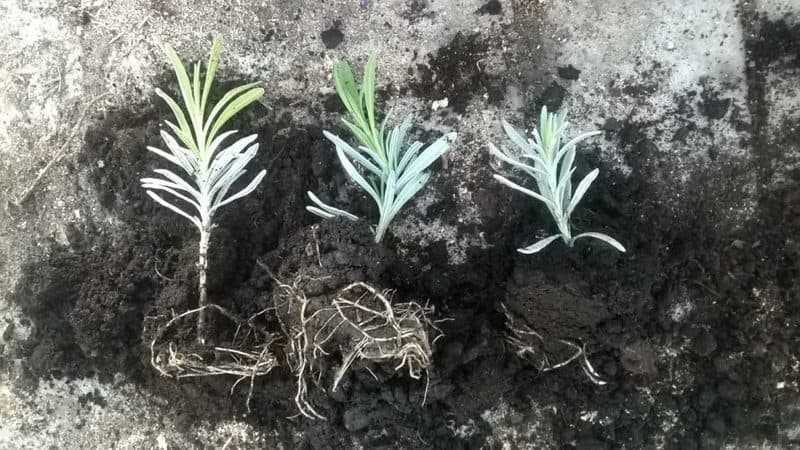

Reproduction of lavender
Can I sow seeds directly into open ground?
Even in Siberia, it is possible to plant lavender seeds outdoors, in open ground. It is easier, but this method significantly reduces the number of sprouts in lavender. In addition, if for sowing you chose the autumn months (September or October), then there is a risk that the seeds will freeze out after the first frost.
To prevent this from happening, after the first snowfall, throw as much snow as possible on the landing site. This will keep you warm and the seeds will naturally harden over the winter.
It is not so risky to plant seeds in the spring. But then you will need to refrigerate them the same way as before planting in pots. Place the seeds in a container of sand, and then leave in a cool place for one and a half to two months. Then you can plant them.
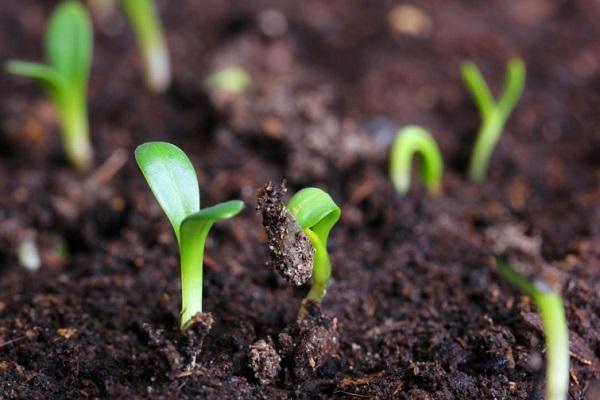

How to deal with pests
Lavender is practically unaffected by insect pests. This is due to the fact that its stems and leaves contain a large amount of essential oils.
Occasionally, leaf beetles and spider mites can be found on lavender. But usually there are very few of them. However, if you carry out pre-planting treatment with insecticides, then there will be no pests at all.
Of the diseases to which the plant is susceptible, gray rot can be noted. But this disease is not cured in any way. A diseased bush must be dug up and burned away from other plants. Gray rot is a consequence of improper care of lavender. Especially often it occurs due to the wrong watering regime of the plant.
Diseases and pests
Lavender is a fairly problem-free plant in terms of disease and pest damage. But occasionally troubles happen to him.
Gray rot
Due to waterlogging in cool weather, lavender bushes can get sick with gray rot. This happens quite rarely when there are drainage problems. The decayed parts of the plant must be cut off and burned so as not to spread the fungus.
Pennitsa (slobber)
This insect from the category of cicadas is widespread throughout Russia. The length of the penny is 5-8 mm, it can have various colors, from solid black to light brown with various patterns. They can live in very humid and very dry places.
Pennitsa lays eggs at the base of the lavender shoots. The larvae hatch from them produce a foamy liquid, similar to saliva. It is necessary to protect against enemies and from drying out. The larvae feed on the juices of the host plant, which greatly weaken it, and reduce decorativeness.
To remove the saliva larvae, you need to rinse them with a stream of water from a hose. Treatment with insecticides also helps.
Rainbow beetle (rosemary beetle)
This leaf beetle 5-8 mm long has a very beautiful color - longitudinal stripes of green and purple, shimmering with metal. It feeds on lavender, rosemary leaves, less often thyme, sage and perovski. You can only deal with it by mechanical collection.
Agalmatium two-bladed
Agalmatium is widespread in the south of Russia and specializes in essential oil crops. This insect up to 6 mm long lays pale yellow eggs in groups of 2-22 on lavender stems from the shady side. Sticky eggs become covered with dust, disguising themselves as lumps of earth. The larvae hatched from eggs feed on lavender leaves, forming dots and spots on them.
To protect against agalmatiums, plants are treated with insecticides.
Popular bugs
Landing on heavy clay soils, in lowlands.
Lavender should be planted on a hill, in a lighted area, and away from water sources. Excessive moisture in the soil leads to root rot.
Lack of summer pruning.
Summer pruning is optional after flowering, but it will allow the lavender to bloom again after 15 to 20 days.
Excessive watering.
Lavender prefers infrequent watering. From excess moisture in the plant, growth slows down, the leaves begin to turn yellow. If you accidentally "flooded" the plant, be sure to loosen the soil so that moisture does not stagnate at the roots.
How to grow lavender at the dacha VesOgorod.ru
Rules for planting and caring for hydrangea at their summer cottage
It is unlikely that someone is not familiar with a plant like lavender. However, it cannot be found everywhere in nature. Lavender grows in abundance in the Crimea or the Caucasus, as well as in the mountainous regions of Russia and Europe.
In the middle lane, this spicy-aromatic plant, with some diligence, can also be grown.
Where to plant
You can place lavender in any flower beds. It is suitable for decorating alpine slides. This plant is planted near the entrance to the house, near gazebos or terraces. Or you can plant lavender in a special garden bed, where other herbs grow, for example, basil.
There are several varieties of lavender, but for summer residents living in the middle lane, I recommend planting narrow-leaved lavender.
A characteristic aroma is emitted not only by lavender flowers, but also by leaves. Their scent is especially strong in the middle of summer.
Planting lavender
When planting lavender, choosing the right location is important. This is a sun-loving plant, therefore it is placed in open sunny areas. In this case, the numerous small lavender flowers will resemble a real lilac carpet.
But even in light partial shade, lavender bloom will not be complete.
The choice of soil is also important for the successful cultivation of this herb. Well-rotted garden compost can be added to the soil.
Lowland and wetlands should never be used for planting lavender. With a close location of groundwater, on constantly moist soil, this plant will not grow. Acidic soil is also not good for lavender.
The most convenient way, of course, is to plant lavender grown in a container, but in the fall you can sow seeds collected from bushes and expand areas with this unique plant.
Before planting, it must be borne in mind that lavender does not tolerate transplanting well. Therefore, in more northern latitudes, this plant is recommended to be grown immediately in containers or flowerpots in order to transfer it to the house in the fall.
But if you cannot do without a transplant, then the plant is dug up with a large clod of earth.
Lavender care
In a very dry summer, lavender should be watered, avoiding waterlogging of the earth. Excess moisture can cause the root system of this plant to rot.
Lavender is a fairly slow-growing spice plant, and at first you will have to constantly rid it of annoying weeds.
It is recommended to remove faded inflorescences in a timely manner in order to prolong the flowering period of lavender.
For faster growth at the beginning of the growing season, the plant can be fed with nitrogen fertilizers.
In the middle lane, it is recommended to cover young lavender plantings for the winter so that the plants can survive the winter without problems. They are covered with spruce branches or dry leaves. The film material should not be used so that the plant does not wither away.
Older lavender plants can do without shelter if good snow cover is expected in winter.
How to grow lavender from seeds
For lavender seeds to germinate, they must be stratified. They can be sown before winter immediately on the site or at home for seedlings.
Subwinter sowing is usually carried out, as for all other crops, when the soil freezes over, having prepared the planting site in advance. Seeds sown in this way can only germinate in late spring or even summer. The emerging seedlings require regular watering.
Growing seedlings
Seeds collected from their site or bought in a store are sown for seedlings at the end of winter, in January - February. They are sown in the ground in a small tray or container and sprinkled with a small layer of sand, 3 mm. Cover with foil or a transparent lid and refrigerate for 2-4 weeks. The air temperature should be no more than +5 degrees.
After keeping the seeds for the required time in the refrigerator, the container is transferred to a room with a temperature of about 20 degrees Celsius. Here the seeds should germinate for about 1 month. We must not forget about moistening the soil from a spray bottle.
When shoots appear, the film is not removed from the container immediately, but only slightly opened for a short time: for 1 or 2 hours, thus hardening young plants.
Lavender is planted on the garden plot when return frosts are no longer expected, when the average daily air temperature is approximately the same.
Lavender grown from seed can bloom as early as next year.
Dear summer residents! Lavender is a wonderful spice plant with an unforgettable aroma and beautiful flowering. Try to plant it on your site!
Harmony of plants
Sometimes people wonder what lavender is combined with. Planting and caring for this flower in the Moscow region often entails the need to plant another flower. This is done mainly for landscape design. Planting a plant along a curb, path, or hedge can be combined with flowers such as rose, hydrangea, or sage. Given the color scheme of lavender, it is recommended to use orange or red rosebuds, and in the company with hydrangea, the flower will look perfect on an alpine slide. Lavender looks very beneficial in a flower pot. If you plant just one lavender in a large area, then you can enjoy the view only of its beautiful purple bushes. It is with such a purple carpet with a wonderful scent that you can surprise your guests, and they will be able to see in all their glory how lavender can bloom. Planting and caring for this flower in the Moscow region is not too difficult.
general description


As for such a species as narrow-leaved lavender, planting and caring for this flower in the Moscow region does not differ from these processes in other regions of Russia. The principle of operation is the same. But first, let's dwell on the general characteristics of the plant. Lavender has won a solid place both in the field of landscape design and in the light industry in the manufacture of perfumery water, fresheners, gel, etc. The plant came to us from the Mediterranean and has about 30 varieties. Plants such as mint, rosemary, thyme are its direct relatives. A delicate pleasant aroma will not leave anyone indifferent, and purple flowers delight the eye of everyone who sees them. The plant itself has a narrow trunk with narrow greenish-gray leaves. The buds are collected in an inflorescence that blooms from June to August. Interestingly, even when dry, flowers retain the ability to aromatize, and they are highly prized for this ability.
Lavender properties harm and benefit
Medicinal properties of lavender
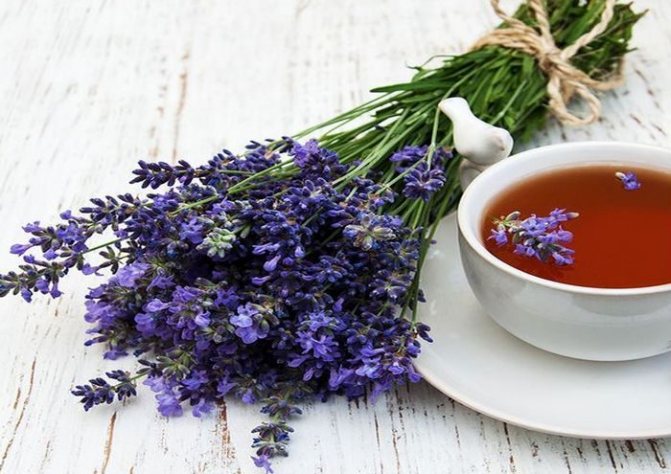

Lavender has an essential oil in all aerial parts; it contains linalool, coumarins, ursolic acid, tannins, geraniol and borneol. Lavender oil is very useful, due to this it is widely used both in medicine and in the perfumery and cosmetic industry. This oil is used to treat bruises and burns. Lavender is also used in the treatment of cerebrovascular diseases, seizures and paralysis after a stroke, and it can also help with dizziness, headaches and drowsiness. The culture is distinguished by its diuretic effect, and it is also able to eliminate toothache. Tea with this plant is used to relieve stomach discomfort and cramps. It can also help with melancholy, irritability, hysteria and neurasthenia, as well as with flu, asthma, bronchitis, whooping cough, tuberculosis, enteritis, flatulence, atony of the gastrointestinal tract, worms, rheumatism, cystitis, amenorrhea, hypertension, fever and various rashes ...
Experts note that lavender infusion has a positive effect on the human nervous system as a whole, as well as on his general mental state. It helps to eliminate stress, as well as to reduce the negative impact of adverse factors on the mental state and consciousness of a person. It was also noticed that the infusion helps to stimulate mental activity and to quickly restore energy and strength. Lavender foliage is used for the preparation of healing baths, and dried inflorescences are used as an effective anti-moth remedy when storing clothes, and also as a fragrance for linen and room.
Contraindications
Lavender oil should not be used by pregnant women, especially in the early stages, because lavender helps to stimulate the contraction of the muscles of the uterus.It is also forbidden to use it after an abortion, as in this case it can cause bleeding. Also, lavender can not be used simultaneously with drugs that include iodine or iron. Prolonged use of the oil can cause the development of depression, as well as the appearance of irritation of the gastrointestinal mucosa. Products made on the basis of lavender have a powerful effect, and therefore can cause a severe allergic reaction. In this regard, before using such a drug for the first time, it is imperative to consult with a qualified specialist.
Pruning
One of the main ways to care for lavender in the garden is by pruning. Pruning annually will make the plant bloom profusely and maintain its proper shape. This is a mandatory procedure for growing. The lack of pruning makes the bushes quickly lose their attractive appearance, the plants are bare inside, the branches crawl along the ground
It is important to know how and when to prune lavender so that it blooms profusely every year and has a pleasant, compact shape.
Pruning time
Prune lavender 2 times a year and there are 3 pruning times to choose from:
Here are the secrets of pruning lavender:
Young, undeveloped shoots are cut in half in the first year of growth. Such pruning will cause the lush development of the bush, an abundance of new shoots at the base, forming a dense crown. The first pruning period is early spring - from the third decade of March to early April, preferably on a warm and sunny day
This is very important for maintaining the correct shape of the shrub and preventing the creation of a so-called bald nest within the bush. During spring pruning, remove all shoots damaged in winter, diseased, broken, violent or damaged branches
The rest are cut so as to give the plant its usual thick form, stimulating the emergence of new shoots. Lavender should be pruned regularly every year to avoid excessive bushiness. Systematically formed plants will be compact and dense and therefore less susceptible to the damaging effects of snow. But this will not save the bush from damage, especially if it is constantly covered with snow. The second term for pruning is summer, from July to September, when the bush blooms. Pruning consists of trimming dying buds. This stimulates the plant to bloom again. In summer, lavender is harvested for drying - when the color of the flowers can already be seen, but before they are fully developed. The dried lavender bouquet smells great in the closet, drawer, repelling moths. The third term is late summer, early autumn (mid-September). At the end of summer, immediately after flowering, you need to cut off the lavender inflorescences by 7 cm with fragments of shoots. This operation can be performed instead of the spring one. Autumn cutting strengthens the plant and prepares it for winter. The event is held on a warm, cloudy day without precipitation. Do not be late with autumn pruning, as growing young shoots can be damaged by frost.


How to prune lavender?
In spring and autumn, young, immature shoots are cut off, cutting them in half.
Cut the stems carefully so as not to cut off the buds, which spread very slowly and weakly. Cutting the shoots too low contributes to the death of the perennial part of the bush
By cutting off the twigs, they form a ball-shaped bush. This shape provides air access to the inner surface of the bush on each side, which prevents the germination of internal branches and provides sufficient lighting for all shoots.


Summer pruning is aimed at cutting off faded inflorescences. After or even during flowering, all inflorescences are cut off along with leafless stems. This results in better compaction and initiates re-flowering in the same season. Reducing the shoots of inflorescences, they try to maintain the shape of the circle.


If the shrub is very unkempt or old, you can perform anti-aging pruning. For this, the shoots are cut off radically, even up to 1/3 of the length. This operation is usually performed every 4-5 years in the spring. It improves the condition of the bush, prevents the bare branches.
Plant formation should begin after planting. Young, undeveloped bushes are cut in half. This will give many new shoots at the base. The next pruning is done in the spring of next year.

